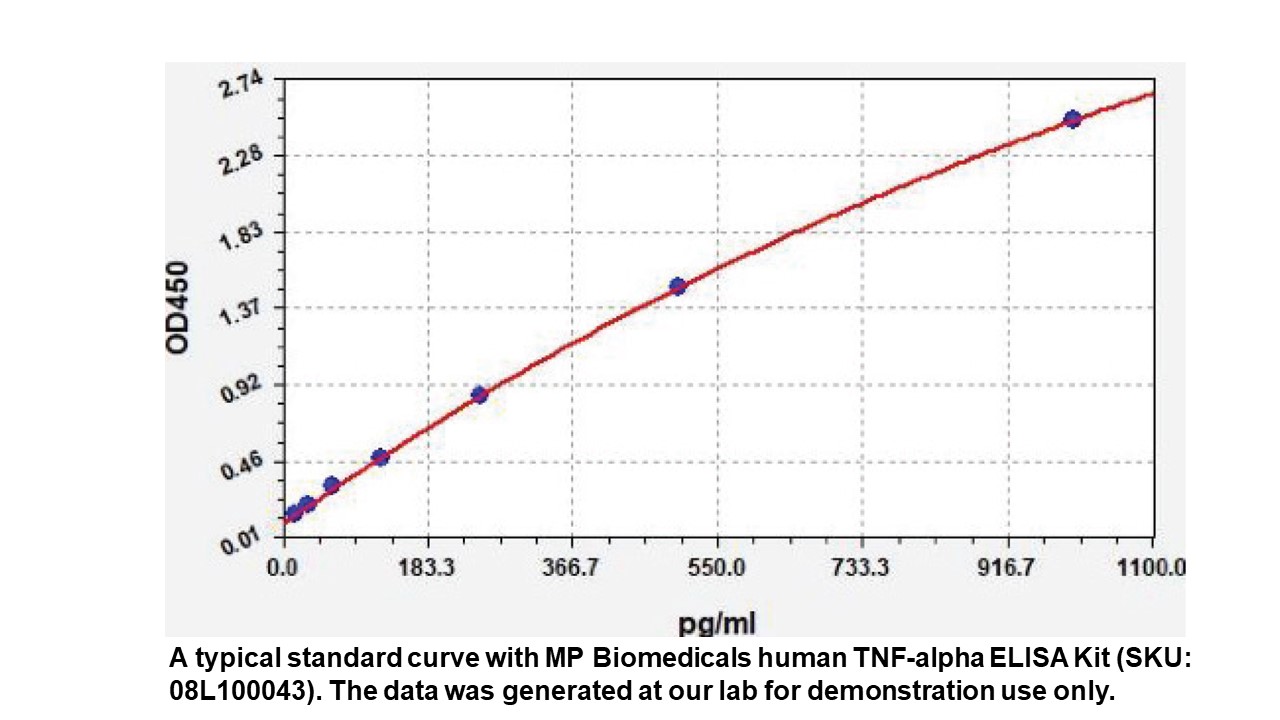Description
TNF-alpha is the prototypic ligand of the TNF superfamily which plays a central role in inflammation, apoptosis, proliferation, invasion, angiogenesis, metastasis and morphogenesis. It is expressed on macrophages, endothelial, epithelial and tumor cells as a 26kDa transmembrane protein.
TNF-alpha is cleaved by proteolytic processing into six chains:
- TNF membrane form
- Intracellular domain 1
- Intracellular domain 2
- C-domain 1
- C-domain 2
- TNF soluble form
Signaling from TNF-alpha differs depending on the type of ligand initiating the signaling event (intracellular, membrane or soluble). As an example, the membrane form of TNF-alpha appears to mediate anti-tumorigenic therapeutic responses whereas the soluble ligand is linked to inflammation and proliferation.
In this ELISA kit, a TNF-alpha specific antibody has been pre-coated onto 96-well plates and blocked. Standards or test samples are added to the wells and subsequently an TNF-alpha specific biotinylated detection antibody is added and followed by washing with wash buffer. Afterwards, Streptavidin-Peroxidase Complex is added and unbound conjugates are washed away with wash buffer. TMB is then used to visualize Streptavidin-Peroxidase enzymatic reaction. TMB is catalyzed by Streptavidin-Peroxidase to produce a blue color product that changes to yellow after adding an acidic stop solution. The density of yellow coloration is directly proportional to the amount of TNF-alpha captured in the plate.


